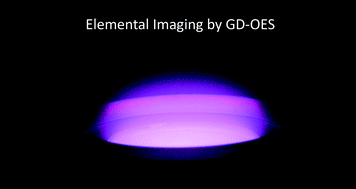Correcting distortion in a monochromatic imaging spectrometer for application to elemental imaging by glow discharge-optical emission spectrometry
Abstract
A method to correct for instrumentally introduced image distortion in a monochromatic imaging

* Corresponding authors
a
Indiana University, Department of Chemistry, 800 East Kirkwood Avenue, Bloomington, IN, USA
E-mail:
hieftje@indiana.edu
Fax: +1(812)855-0958
Tel: +1(812)855-7905
b University of Münster, Institute of Inorganic and Analytical Chemistry, Corrensstr. 30, Münster, Germany
c Leibniz Institute for Solid State and Materials Research Dresden, Helmholtzstr. 20, Dresden, Germany
A method to correct for instrumentally introduced image distortion in a monochromatic imaging

 Please wait while we load your content...
Something went wrong. Try again?
Please wait while we load your content...
Something went wrong. Try again?
C. Engelhard, S. J. Ray, W. Buscher, V. Hoffmann and G. M. Hieftje, J. Anal. At. Spectrom., 2010, 25, 1874 DOI: 10.1039/C0JA00068J
To request permission to reproduce material from this article, please go to the Copyright Clearance Center request page.
If you are an author contributing to an RSC publication, you do not need to request permission provided correct acknowledgement is given.
If you are the author of this article, you do not need to request permission to reproduce figures and diagrams provided correct acknowledgement is given. If you want to reproduce the whole article in a third-party publication (excluding your thesis/dissertation for which permission is not required) please go to the Copyright Clearance Center request page.
Read more about how to correctly acknowledge RSC content.
 Fetching data from CrossRef.
Fetching data from CrossRef.
This may take some time to load.
Loading related content
